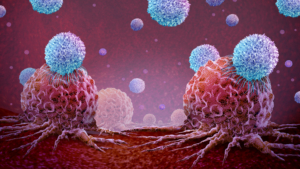
Efficient R&D networks based on innovation ecosystems
Research and innovation models are changing dramatically. The emergence of platforms such as advanced therapeutics is accelerating a change from innovation within big centres and universities to smaller, decentralised and more focused units.
Innovation is always highest where there is freedom to be creative. An EBE member company CEO whom I know put it very succinctly: The moment my CSO knows what’s going on in the lab, we are no longer creating new innovation. The biopharmaceutical ecosystem has grown infinitely more diverse, with a wide variety of participants contributing to nearly every aspect of development. Networks and collaborative research establishments were originally seen as a supplement to innovation, but now they have begun generating more core innovation, and are viewed as essential. Considering the fact that most European healthcare biotech companies in the fragmented European innovation landscape are SMEs (70% of the 2,000 healthcare biotech companies in Europe have less than 50 employees), we now desperately need efficient networks of innovators from science, business and public institutions to facilitate funding and enablement. There has been a paradigm shift in attitudes towards generating innovation, and this means that all stakeholders need to begin working together much more closely all the way from the lab to the shelves of pharmacies.
The ultimate drivers in this scenario, of course, are the return on investment and the return on health. We have seen a high return on the funding and time committed to networks that have a specific focus, with the understanding that innovation now no longer necessarily comes from our own laboratories.
A critical point is that both partners in a partnership have to benefit. Networks help to foster mutual trust, particularly where historically there has been a mutual mistrust, a situation largely born of differences in operational cultures. But the Innovative Medicines Initiative (IMI) and its successful continuation have demonstrated that these cultural gaps can also be overcome for the greater benefit of patients. Needless to say, partnerships need to demonstrate win-win, and public authorities can help encourage that. Partnerships can work to create a platform of mutual trust and benefit, just as the IMI forges programmes that foster innovation with reduced politics, creating a foundation for increased trust to flourish.
To support all of these aspects, EBE recently launched a partnership with the European Biotechnology Network (EBN) to facilitate EBE member companies’ access to diverse networks and funding opportunities across Europe. This move is aimed at helping them to build partnerships out of their comfort zone, and deliver disruptive innovation in the future. I am delighted with this collaboration, not least because it truly demonstrates the delivery power of efficient networking.
As we move forward through 2014, the two networks will bring their members together through the auspices of Horizon 2020, the IMI, and many other funding opportunities, allowing them to discover common goals around which they can combine their specialist technology platforms. From SMEs to large companies to universities the lure of creating exciting science and business is the perfect catalyst for partnership. And as barriers between sectors and organisations fall, the results can only be positive for participants and Europe as a whole.
Roberto Gradnik
is the Chief Executive Officer of Stallergenes, and has also been the President of the European Biopharmaceuticals Enterprises (EBE) since January 2012. From 2004-2010 he served as President of the Italian biotech industry association Assobiotec. Trained as a physician, Gradnik has more than 25 years of experience in the pharmaceuticals and biotechnology sectors. Prior to his current post, he held senior positions at BASF subsidiary Knoll Group and Serono/Merck Serono.


 adobe.stock.com - Cathy
adobe.stock.com - Cathy freshidea / Adobe Stock
freshidea / Adobe Stock